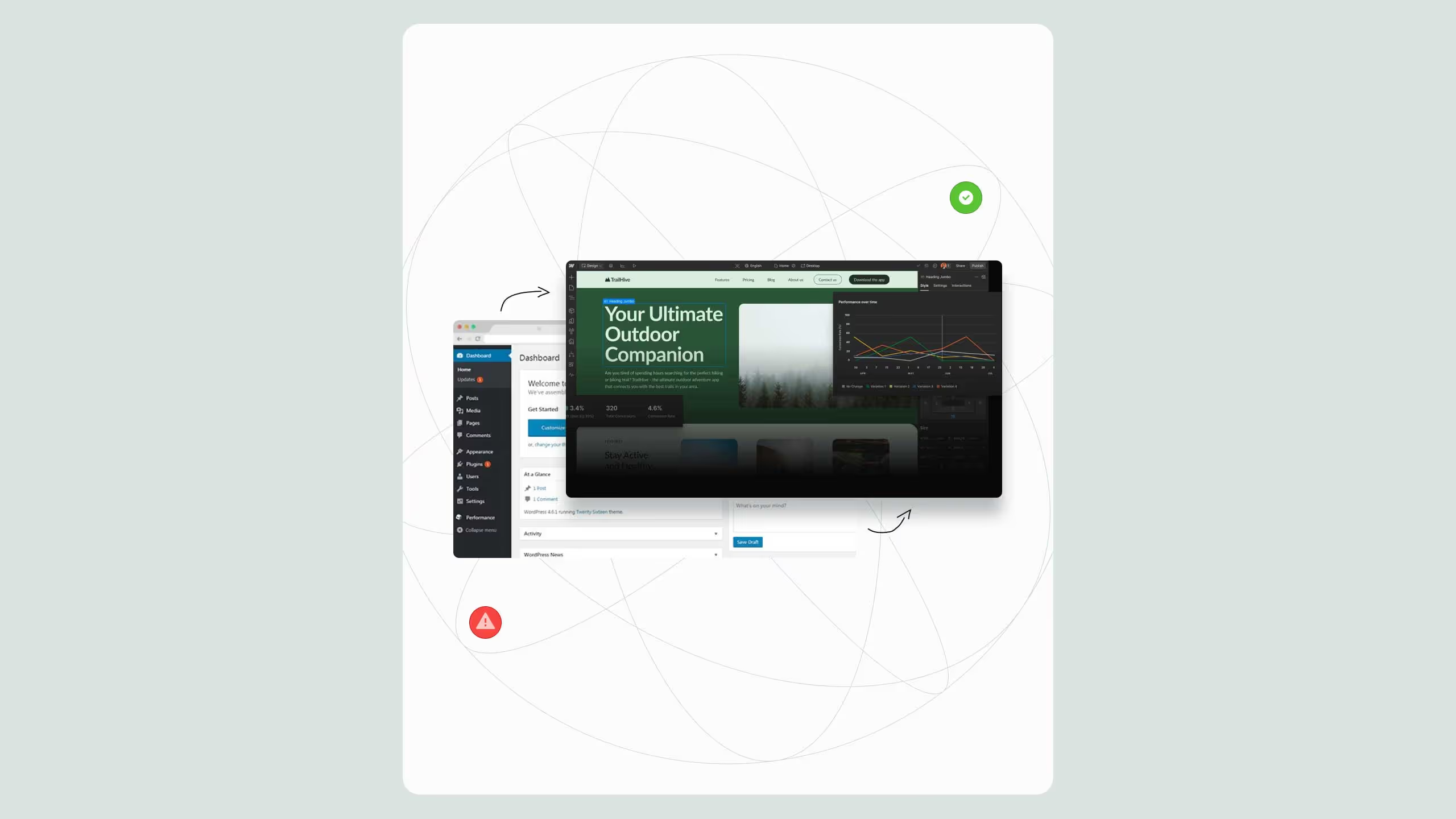Build an SEO Growth Engine on Webflow for Scalable Leads

Building an SEO growth engine on Webflow transforms your website from a static presence into a lead-generating machine. Webflow’s clean code, fast hosting, and integrated CMS make it the perfect platform for scalable SEO. Start by defining your goals and KPIs, perform intent-driven keyword research, structure your CMS for long-term scalability, and optimize every page for search intent and conversion. Add schema markup, publish high-quality blog content, and track results with tools like GA4 and Search Console. Done right, your Webflow site becomes an always-on growth asset that drives qualified traffic and measurable ROI.
In today’s fiercely competitive digital landscape, building an SEO growth engine on Webflow is not just a strategy, it is a necessity for sustainable traffic and lead generation. Whether you’re a SaaS startup, a creative agency, or an online service provider, Webflow offers a powerful foundation to scale your search visibility without relying on bulky plugins or slow infrastructure. This article provides a step-by-step blueprint to help you launch and optimize an SEO engine that drives qualified leads, boosts conversions, and ranks high on any search engine.
Why Webflow is the perfect platform to build an SEO growth engine
Before diving into the how-to, let’s quickly address why Webflow is the ideal choice for businesses aiming to scale through search.
- Clean Code Structure: Unlike other CMS platforms, Webflow generates semantic HTML, CSS, and JavaScript, ensuring Googlebot can crawl your site efficiently.
- Visual Control and Customization: With Webflow, you get pixel-perfect control without sacrificing performance or flexibility.
- Fast Load Times: SEO performance heavily relies on speed. Webflow sites are CDN-hosted, giving you near-instant load times.
- Integrated CMS for Scalable Content: Build dynamic content hubs, landing pages, and blogs all SEO-optimized without involving developers.
- Built-In SEO Controls: From meta titles to canonical tags and 301 redirects, Webflow gives marketers full access to on-page SEO controls.
If you’re building a long-term inbound strategy, it starts here.
Step 1: define your SEO objectives and KPIs
Every high-converting SEO growth engine starts with a crystal-clear plan. Ask yourself:
- What’s your primary offer or value proposition?
- Who is your ideal buyer persona?
- What key actions define a conversion?
Set your KPIs. These often include:
- Organic traffic growth (monthly)
- Top keyword rankings
- Conversion rate from organic visits
- Backlink acquisition goals
Tools like Google Analytics 4, Google Search Console, and SEMrush will help you benchmark and monitor progress.
Step 2: perform a strategic keyword research plan
At the core of every growth engine is keyword research with transactional intent. You’re not just chasing volume, you want to attract users ready to engage or buy.
Focus Areas:
- Transactional Keywords: Examples include “buy Webflow SEO services,” “SEO migration for Webflow”
- Long-Tail Commercial Keywords: For instance, “build SEO growth engine on Webflow,” “Webflow technical SEO audit services”
- Problem-Aware Queries: Such as “why my Webflow site doesn’t rank,” “slow Webflow page SEO fix”
Use tools like Ahrefs, LowFruits, or SurferSEO to cluster your keywords by intent and funnel stage.
Pro tip: Aim to include the phrase build SEO growth engine on Webflow naturally throughout your core content and blog structure for long-term positioning.
Step 3: structure your site for SEO scalability
One of Webflow’s biggest strengths is the ability to build scalable site structures using Collections (CMS). Here’s how to architect a structure that ranks:
Key Tips:
- Homepage: Link to key service and pillar pages.
- Services Pages: Focus on each offer using transactional intent keywords. For example: /webflow-seo-consulting, /webflow-site-audit.
- Blog Hub: Use a CMS Collection to build long-form blog posts that target long-tail queries.
- Internal Linking: Link from blog posts to service pages using CTA anchors like Get a free Webflow SEO audit or See our Webflow growth services.
Establish clear parent-child relationships in your URL structure:
/services/webflow-seo
/blog/build-seo-growth-engine-webflow-blueprint
This structure helps search engines understand content hierarchy and improves crawlability.
Step 4: optimize on-page SEO in Webflow
On-page optimization is where the magic happens. Webflow gives you total control over:
Essentials:
- Title Tags and Meta Descriptions: Make sure each includes a unique transactional keyword and emotional trigger.
- Example: “Dominate Search with a Webflow SEO Blueprint | Free Audit”
- Header Hierarchy (H1, H2s): Use your long-tail keywords naturally in H1 and supporting H2s.
- Image Alt Tags: Always describe your images with keywords where relevant.
- Open Graph Settings: Make your content share-worthy on social media, indirectly improving backlinks.
Don’t forget schema markup. Use Webflow’s custom code embeds or tools like Finsweet’s Attributes to implement:
- BlogPosting Schema
- Product or Service Schema
- FAQ Schema for Long-Form Pages
Step 5: build high-converting landing pages
Every SEO growth engine on Webflow needs landing pages designed for both ranking and converting. Here’s how:
- Hero Section with Clear Value Prop: Include your primary keyword above the fold.
- Trust Signals: Show logos, reviews, case studies.
- Conversion CTA: “Get Your Free SEO Audit,” “Book a Webflow SEO Strategy Call”
- Live Chat or Scheduler: Integrate Calendly or HubSpot chat to reduce friction.
Build multiple landing pages around commercial keywords like:
- “Webflow SEO for SaaS”
- “Ecommerce SEO on Webflow”
- “Technical SEO Migration to Webflow”
Use A/B testing to refine copy and layout for conversion optimization.
Step 6: publish high-quality blog content that ranks
A growth engine needs content fuel. Publish blog posts targeting mid and top-of-funnel keywords but always with a path to conversion.
What Works:
- How-to Guides: “How to Migrate Your Site to Webflow Without Losing SEO”
- Case Studies: “How We Increased Organic Traffic by 140% Using Webflow CMS”
- Comparisons: “Webflow vs WordPress SEO: What Ranks Better?”
Use internal links from these articles to transactional pages:
Example: “If you’re planning a migration, our Webflow SEO migration service ensures zero ranking loss.”
Aim for at least 1,000 words per article with your main keyword appearing 0.5 to 1 percent of the total word count.
Step 7: boost your domain authority with backlinking
Even the best on-page SEO won’t rank without high-authority backlinks. Here’s how to get them:
- Guest Posting: Publish on Webflow or design-related blogs.
- Resource Link Building: Submit your guides to SEO and design resource hubs.
- HARO Outreach: Use Help a Reporter Out to contribute insights in exchange for backlinks.
Make sure all backlinks point to strategic pages like /services/webflow-seo-consulting or cornerstone blog posts.
Step 8: monitor, optimize, and scale
Your SEO growth engine is never static. Use data to improve performance month over month.
Tools to Use:
- Google Search Console: Track impressions, clicks, and average ranking.
- Hotjar or Microsoft Clarity: See how users interact with your pages.
- Webflow Analytics and GA4: Monitor bounce rate, session duration, conversions.
Iterate. Remove underperforming content. Redirect thin or outdated pages. Double down on what’s working.
Final thoughts: build, test, scale
If you’re serious about building an SEO growth engine on Webflow, now is the time. You don’t need a full dev team. With Webflow’s no-code flexibility, technical SEO capabilities, and visual CMS, marketers and founders can take full control of organic growth.


.svg)
.svg)


